A color space defines the exact palette of colors that can be represented on digital devices, from cameras to monitors. Knowing which color space to use is essential for anyone involved in digital media to achieve accurate and consistent colors. This piece clarifies the concept of color spaces, distilling the science into practical advice for choosing the right color space for your project.
Key Takeaways
- Color spaces are standardized ranges of colors that devices can reproduce, providing consistent color management across various digital platforms and ensuring accurate color representation in digital imaging.
- Elements such as color gamut, white point, and gamma curve define a color space, impacting saturation, color balance, and luminance distribution, and are crucial for professionals in industries like photography, videography, and printing.
- Different color spaces, including Adobe RGB, sRGB, CMYK, and YCbCr, Rec. 709, HLG, serve specific purposes ranging from digital imagery to printing and video compression, with various advantages and limitations that influence their use in color management.
Exploring the Spectrum: What Is a Color Space?
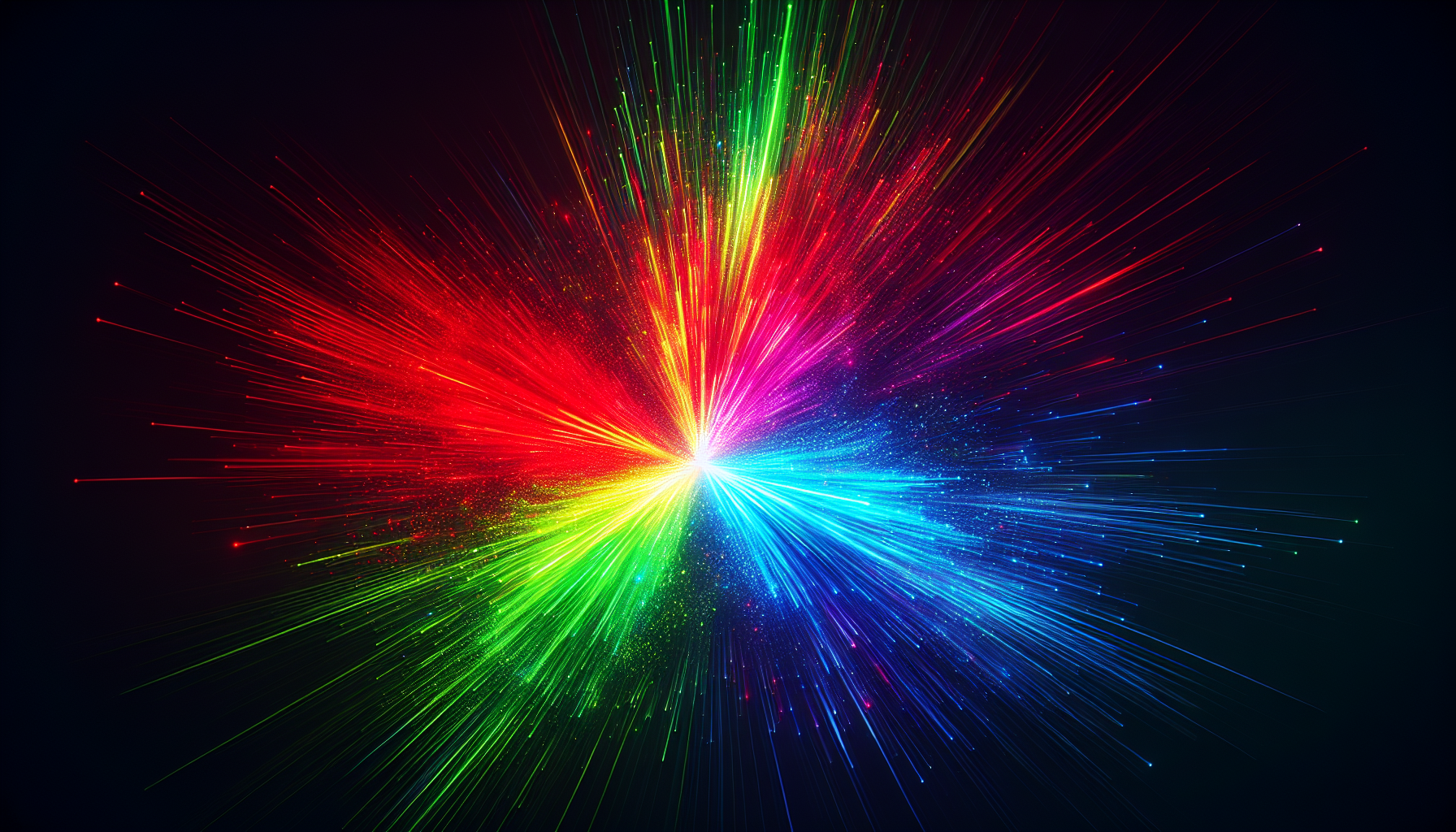
Imagine a universe of colors, where every imaginable hue has a unique place and name – that’s what a color space refers to. It’s a fixed spectrum of colors assigned by number values, defining the range of colors and luminance’s that devices like digital cameras or computer monitors can reproduce in the same space. Standardized color spaces optimize this range for consistency, ensuring that the beautiful cerulean blue you see on your screen will have the same colors on any calibrated monitor.
Accurate color manipulation and editing in photography and videography hinge on a thorough understanding of color spaces. Consider the RGB chromaticity diagram – a visual plane that represents the concept of color space. Each point on this diagram corresponds to a color, and the entire color gamut (range of colors) that a device can reproduce is represented as a specific area within this plane.
The Science Behind Color Spaces

The fascinating world of color space has its roots in our understanding of color perception. Back in 1931, the introduction of CIE RGB and XYZ color spaces marked significant advancements in color management and digital imaging technology, representing some of the early spaces. These color spaces were based on the human eye’s capabilities, with the CIE 1931 standard reflecting the human perception of color.
The RGB color model, based on the primary colors red, green, and blue, is at the core of digital imaging. Today, the most common format in digital devices is the 24-bit incarnation of the RGB color model, which offers 256 discrete levels per channel and is capable of representing over 16 million color variations.
Anatomy of a Color Space: Gamut, White Point, and Gamma
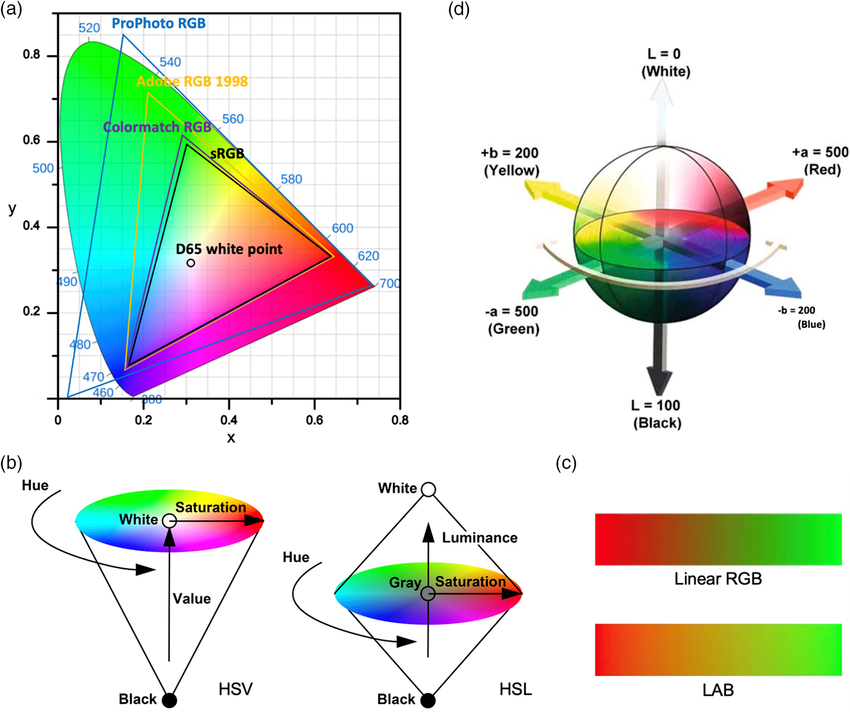
A Color space are more than just collections of colors. They are intricately structured entities, defined by their color gamut, white point, and gamma curve. Each of these elements significantly influences the color capabilities of a specific color space.
Understanding Color Saturation
Saturation is a measure of color purity, indicating how much a color differs from a gray of the same brightness. It’s like the spice in your favorite dish – the higher the saturation, the more intense and pure the color. A color gamut encompasses the range of possible hues and their respective maximum saturations within a color space, marking the boundaries of that color space’s capabilities.
For artists, a grasp of saturation is vital since it contributes to the definition of colors in a scene. A deeper understanding of saturation can help an artist control how a uniformly colored object would appear when turned towards a light source, adding depth and vibrancy to their work.
The Role of White Point
Picture a blank canvas for an artist – that’s the role of the white point in a color space. It serves as the reference for pure white and influences the overall color balance. Just as the canvas’ color influences how paint colors appear, the white point influences color perception within the color space.
Our perception of white or color balance changes under different lighting conditions. The same color can appear different when viewed under various lights, highlighting the influence of white points. Professionals select a white point based on the work’s final destination, ensuring that an image viewed on the web looks as vibrant as it does in print.
Gamma Curve Essentials
Just as the speed of a car influences how fast it reaches a destination, the gamma curve in a color space influences the distribution of luminance values, affecting the contrast and brightness of images. A lower gamma results in darker images, while a higher gamma makes images appear lighter. The tone mapping curve plays a significant role in this process, ensuring the proper distribution of luminance values.
Standard gamma settings are utilized across various devices and industries. For instance, TVs and monitors commonly use a gamma value of 2.2, while the cinema industry uses a value of around 2.6.
Color spaces like sRGB and Adobe RGB utilize gamma correction to adjust linear RGB values for optimal display and printing.
Navigating Different Color Spaces
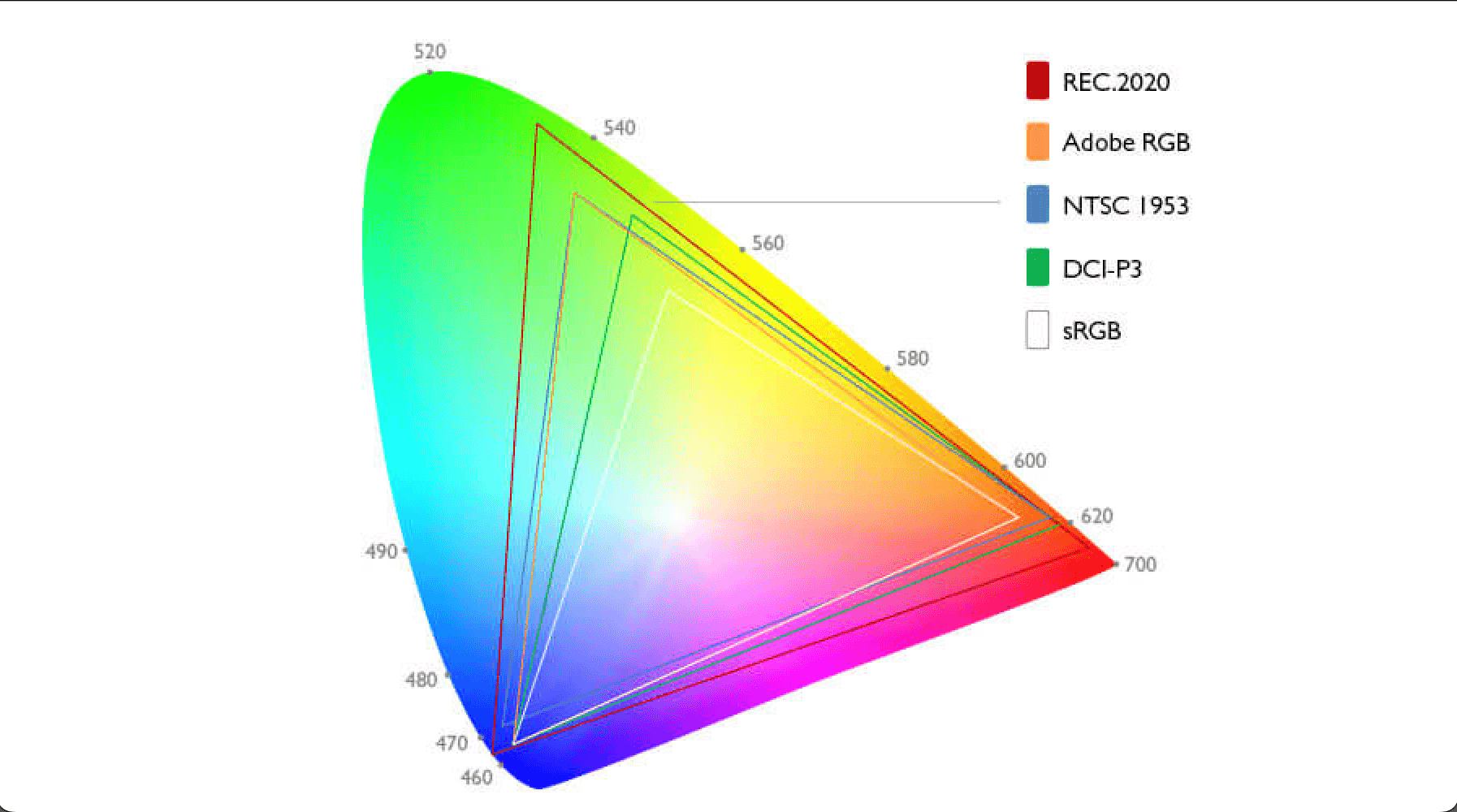
Navigating the world of color spaces can be akin to touring a vibrant global marketplace, each stand offering its unique array of colors. Here are some popular and more common ones, their unique characteristics and applications:
- Adobe RGB: wide gamut of colors, especially in the green and blue regions
- sRGB: compatibility with electronic devices
- CMYK: used for printing purposes
- Pantone: standardized color matching system used in printing and graphic design
Understanding these spaces can help you make informed decisions when it comes to choosing the right color profile for your projects.
Adobe RGB vs. sRGB: Choosing the Right Space
The choice between Adobe RGB and sRGB mirrors deciding between a gourmet restaurant and a local diner – both serve delectable meals catering to diverse tastes and occasions. Adobe RGB, with its larger color space, offers a broader range of colors, making it a favored choice for professional environments requiring precise color reproduction.
On the other hand, sRGB, the default color space for the internet and digital viewing, ensures compatibility and a more uniform color experience across consumer devices and web browsers. The decision to use Adobe RGB or sRGB should hinge on the eventual application of the images, guaranteeing optimal color consistency and representation.
The World of CMYK: Print’s Color System
If you’ve ever wondered why your printer uses cyan, magenta, yellow, and black inks instead of red, green, and blue, it’s because printers operate in the CMYK color space. This model uses a subtractive color method, combining primary pigments to create colors on paper. However, not all bright and saturated colors available in RGB are fully reproducible in CMYK due to its smaller color gamut, presenting a challenge in color selection for accurate print results.
CMYK is the industry standard for full-color document printing, used extensively for materials that demand a wide array of colors, like magazines and brochures. Because color fidelity and the management of color reproduction on paper crucially affect brand recognition and customer perception in printing, there is a necessity for regular color checks and potential adjustments during the printing process.
Converting Between Color Spaces
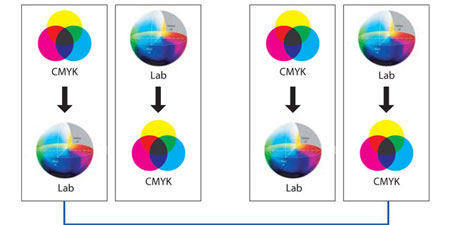
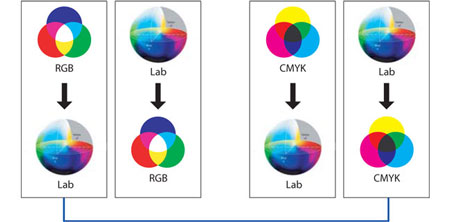
Similar to how languages rely on translators, color spaces employ conversion processes to translate color representation from one basis to another. However, color space conversion can lead to potential issues like gamut limitations and rounding errors.
To achieve consistency, color conversions between device-dependent spaces like RGB and cmyk color spaces often use color management systems with ICC profiles and Color Matching Modules. Larger color spaces are vital for the accurate capture and reproduction of a greater range of colors in various capture and display technologies. Utilizing a reference color space can help evaluate the potential accuracy of color appearance in conversions.
Color Management in Practice
Color management extends beyond a theoretical concept and is a practical principle vital for preserving visual harmony across devices. A color-managed workflow ensures that the vibrant hues of a sunset captured on a digital camera retain their splendor when viewed on a computer monitor or printed on a glossy page.
Color Profiling for Accuracy
In the same way a musician tunes their instrument to guarantee the right notes are played, devices, including a particular device, require calibration to identical color standards to ensure consistent color output. Embedding the correct color profiles into files is akin to providing a translator who can accurately interpret the color language for different devices, ensuring that colors are displayed correctly.
The color bit depth, referring to the number of bits used for each color component in a pixel, plays a role in color space conversion. Here are some key points to consider:
- 16-bit images offer smoother color gradations and are preferable for larger color spaces.
- Different devices and media types may require different gamma settings.
- Image editing software can simulate how colors will look on different output devices or under various lighting conditions.
Best Practices for Consistent Color
Within color management, preserving the maximum amount of color information throughout the editing process can contribute to circumventing issues with color consistency. Just as an artist uses high-quality paints for their masterpiece, it’s important to utilize high-quality design software that supports color management.
Choosing the appropriate color space for the destination medium prevents issues like washed-out or oversaturated colors and inaccurate prints, ensuring consistent color output across various devices and services.
The Future of Color Spaces in Digital Imagery
The world of color spaces evolves in tandem with advancements in technology. The YCbCr color space, which separates luminance information from chrominance, plays a significant role in digital video technology. This color space offers several advantages:
- It does not utilize the full range of the image data type, allowing for additional information to be included in the video stream.
- It provides a more efficient representation of color information compared to other color spaces.
- It is widely used in video compression algorithms, such as MPEG and H.264.
By understanding the benefits of the YCbCr color space, you can make informed decisions when working with within the space.
The characteristics of the YCbCr color space, such as the separation of luminance and chrominance and the efficient use of data ranges, may influence future developments in color spaces for digital video and emerging display technologies.
Summary
From the RGB and CMYK color models to the Adobe RGB and sRGB color spaces, understanding these color spaces allows us to capture and reproduce colors with precision, ensuring that the colors we see on our screens match those in print and so on. As technology evolves, we can look forward to new developments that will continue to enhance our visual experiences.
Frequently Asked Questions
What is meant by colour space?
Color space refers to the range of colors that can be displayed on a visual plane, often interpreted through an RGB chromaticity diagram and then processed for digital/analog images.
Which color space is best?
For vivid color spectrum, AdobeRGB is best, especially for printing. For consistency across digital platforms, sRGB is the better choice.
What is the color of space?
The color of space is beige, as the combined light from galaxies, stars, and gas clouds in the universe creates a hue close to white but with a slight beige tone.
What is the role of the white point in a color space?
The white point in a color space serves as the reference for pure white and influences the overall color balance, functioning as the starting point for how all other colors appear in the space.
How does color space conversion work?
Color space conversion works by translating color representation from one basis to another, but it can lead to potential issues such as gamut limitations and rounding errors. Be cautious of these issues when performing color space conversions.








